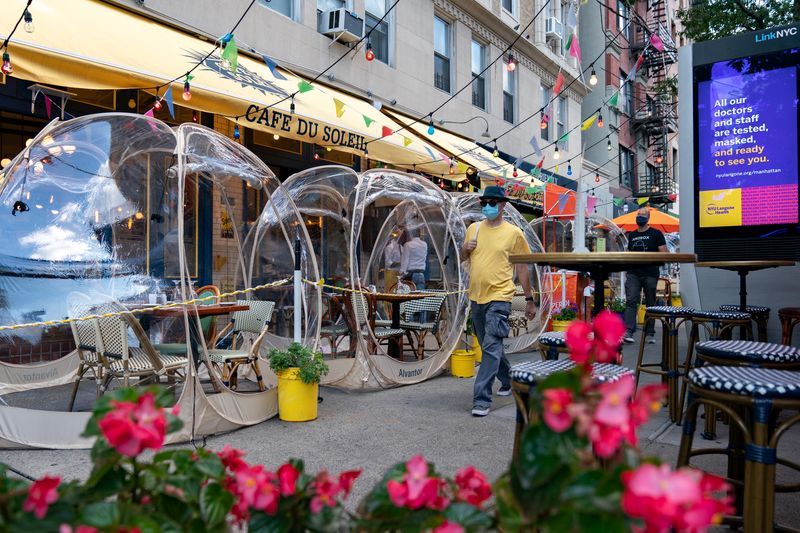By Hadassa Kalatizadeh
As the temperature begins to drop and winter approaches, the many outdoor tents erected for the purpose of safe dining are now at a cross road. Eateries across the state hope to keep these pop-up shelters for as long as possible, to offset the losses they incur while indoor dining continues to be limited. As reported by Crain’s NY, however, the safety of some of these tents may be questionable.
Some of the restaurant’s outdoor structures are closed off at the sides to keep the cold and wind from deterring patrons. This, however, inhibits the free flow of air and may be putting diners at risk for the virus. “Some of them are clearly not safe,” said Jack Caravanos, a clinical professor at NYU’s School of Global Public Health and an industrial hygienist works to assess the safety of environments. “It is sort of the Wild West out there with the creation of these structures.”
“You still should follow all the protocols from indoors,” said Linsey Marr, an engineer who studies the airborne transmission of viruses at Virginia Polytechnic Institute, referring to the tent dining spaces. “People should be distanced, I would prefer to see tables 10 feet apart. People should be wearing masks when they’re not eating.” She gives an analogy that people can use to decide if the space is safe. She says, think of it as if you’re sitting near someone smoking a cigarette. If there is limited air circulation, the smoke will hang in the air and affect nearby tables more. The same is true of the airborne respiratory droplets and particles which can spread the virus. Marr says she wouldn’t risk dining in these enclosed tents unless there were only very few other people there.
As far as the state regulations are concerned, partial tent enclosures, in which more than half of the tent’s sidewall surface area is open, are considered outdoor dining. Fuller tent structures, however, limit air flow and are regulated with the same capacity limits as indoor dining—which is now at 25% of the maximum occupancy capacity. Eateries with these more inhibited structures should also be checking patrons’ temperatures, as per Crain’s.
The news is not very reassuring for NYC’s restaurants and bars, which have been dependent on the outdoor seating to stay afloat. An October report by New York State Comptroller Thomas DiNapoli, estimated that between a-third to half of NYC’s restaurants and bars could close down within the next six months to a year.




